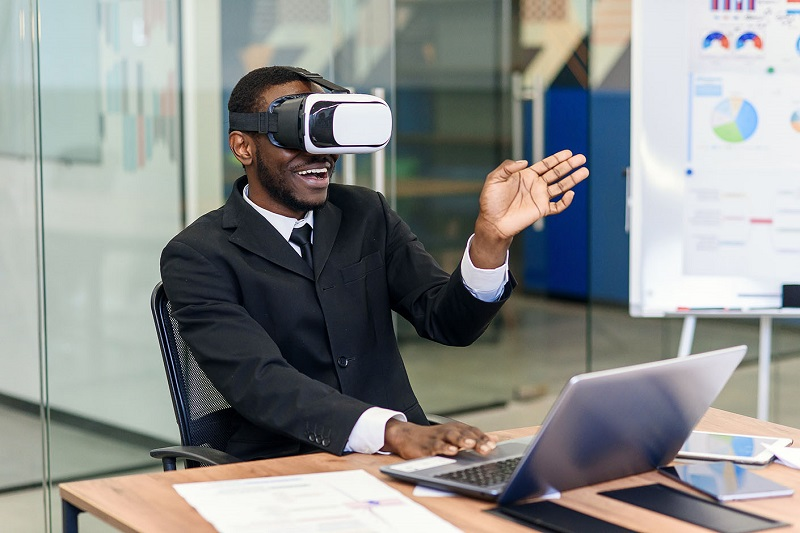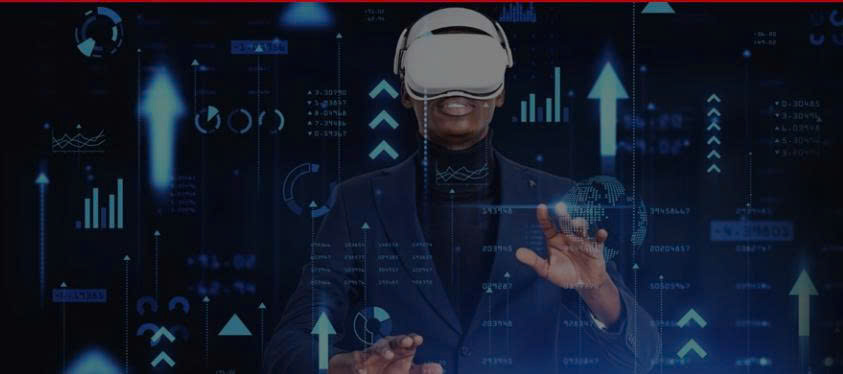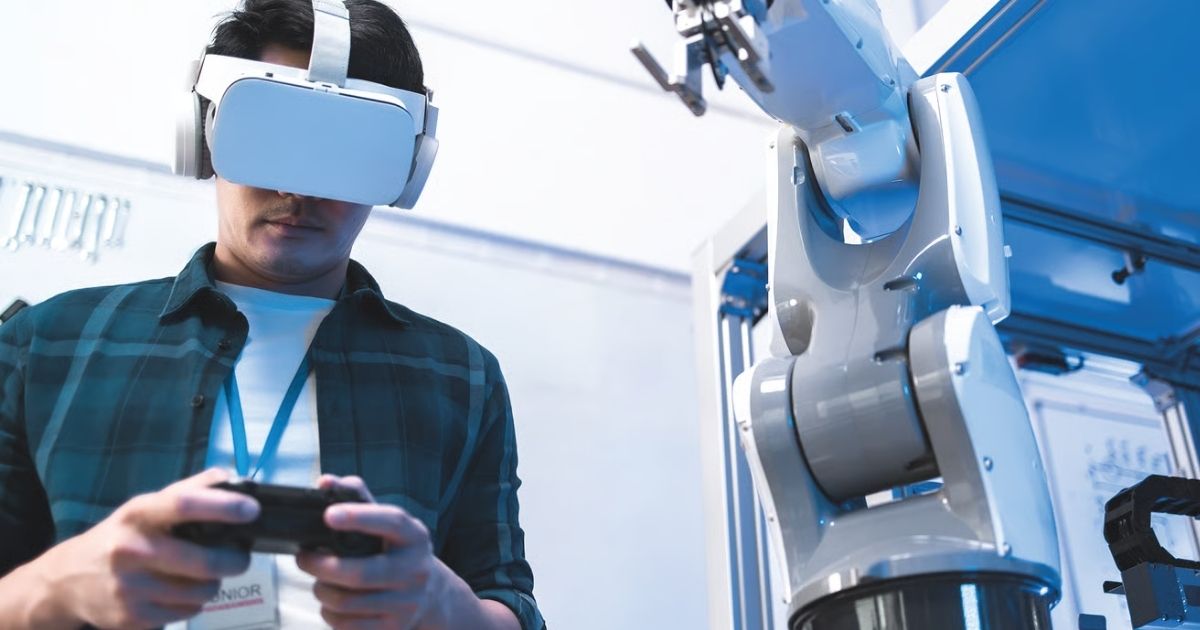WHY AUGMENTED REALITY IN BUSINESS IS A STRATEGIC IMPERATIVE ?

Augmented Reality in Business is no longer a fringe technology reserved for innovators; it’s becoming core to competitive differentiation across industries. AR enhances decision-making by overlaying contextual data on physical environments—guiding assembly, explaining product features, or visualizing design alternatives in real time. When paired with Virtual Reality and Augmented Reality in Business strategies, organizations can offer end-to-end immersive experiences: VR for high-fidelity simulations and AR for on-the-floor execution and customer engagement. The value proposition is clear: faster onboarding, fewer defects, higher conversion rates, and more effective remote collaboration. For ecommerce, AR reduces returns and boosts buyer confidence by enabling virtual try-ons and room previews, while Virtual Reality in Ecommerce extends those interactions into immersive showrooms. Business leaders should approach AR as a platform: invest in reusable content, integrate overlays with enterprise systems, and measure outcomes tied to revenue, cost, and satisfaction. With a pragmatic pilot-first mindset, companies can convert AR pilot wins into scalable programs that generate measurable ROI.
AUGMENTED REALITY IN ECOMMERCE AND VIRTUAL REALITY IN ECOMMERCE

Ecommerce adoption of AR and VR directly addresses the biggest friction points in online shopping: uncertainty about fit, scale, and look. Augmented Reality in Business allows shoppers to place virtual furniture in a living room, try on glasses virtually, or preview cosmetics using realistic face-tracking overlays—actions that increase confidence and reduce return rates. Virtual Reality in Ecommerce takes the next step by creating immersive showrooms where customers explore product collections, interact with virtual demonstrations, and experience brand storytelling in a controlled environment. Combining both offers a hybrid funnel: use VR for premium, appointment-style experiences and AR for everyday browsing and pre-purchase validation. For merchants, integration with commerce platforms, accurate 3D assets, and fast-loading WebAR experiences are essential to minimize friction. Key metrics include conversion uplift, reduced returns, average order value, and time on product pages. Brands that treat AR/VR as part of the purchase journey—rather than a novelty—see sustained improvements in commerce KPIs and richer customer insights.
SALES ENABLEMENT, CUSTOMER EXPERIENCE, AND MARKETING IMPACT

Augmented Reality in Business becomes a powerful sales and marketing tool by enabling interactive product demos, contextual upsells, and personalized presentations. Sales teams using AR can present configurable products, switch materials or colors in real time, and demonstrate hidden features without shipping physical prototypes. Marketing teams benefit from engaging AR campaigns—filters, interactive ads, and location-based activations—that increase reach and drive measurable engagement. AR experiences also enrich post-sale support with visual troubleshooting guides and interactive manuals, enhancing lifetime value and reducing service costs. When integrated with CRM and analytics, AR interactions feed customer behavior data back into personalization engines and campaign targeting, improving messaging precision. Trackable outcomes include demo-to-close time, lead quality, campaign engagement rates, and after-sales support costs. Successful programs balance flashy experiences with clear commercial objectives, ensuring that AR enhances persuasion, reduces friction, and supports the entire customer lifecycle.
TRAINING, MAINTENANCE, AND REMOTE COLLABORATION WITH AR/VR
Workforce productivity is a major area where Augmented Reality in Business delivers measurable impact. AR-guided workflows overlay step-by-step instructions, part identifiers, and quality checkpoints directly onto workpieces, reducing errors and compressing training time. Complementary Virtual Reality training provides immersive simulations for hazardous or complex tasks, allowing repeated practice without risk. For maintenance and field service, AR-enabled remote assistance connects frontline technicians with experts who can annotate the technician’s view, speeding diagnostics and reducing travel. Integration with IoT devices surfaces live telemetry in AR, prioritizing interventions based on real-time condition. These blended learning and support approaches shorten mean time to competence, lower MTTR (mean time to repair), and preserve institutional knowledge. KPIs to monitor include onboarding hours, task completion accuracy, downtime reductions, and support cost savings. A governance model for content updates and version control ensures procedures remain current and compliant as products evolve.
IMPLEMENTATION ROADMAP, TECHNOLOGY CHOICES, AND KPIS
A pragmatic AR/VR implementation starts with clearly defined objectives: increase ecommerce conversion, reduce service time, or accelerate training. Begin with a small, high-impact pilot that maps to one or two KPIs and selects technology aligned to user needs—WebAR for minimal friction, native apps for advanced interactions, and VR rigs for immersive training. Ensure strong integrations with back-end systems (CRM, ERP, PLM) and adopt a content management approach for reusable 3D assets. Security, device provisioning, and accessibility considerations are critical for enterprise rollouts. Measure success with a dashboard tracking conversion lift, return rate reductions, training hours saved, MTTR improvements, and user satisfaction. Use A/B testing to refine experiences and iterate quickly. Budget for ongoing content maintenance, analytics, and governance so AR/VR remains a sustainable capability rather than a one-off experiment. With a disciplined roadmap, businesses can scale pilots into enterprise programs that continuously drive operational improvements.
TURN AUGMENTED REALITY IN BUSINESS INTO SUSTAINABLE VALUE
Augmented Reality in Business is a versatile technology that, when tied to clear objectives and integrated systems, converts novelty into measurable value. From Virtual Reality and Augmented Reality in Business strategies to Virtual Reality in Ecommerce, the combined AR/VR toolkit addresses customer experience, sales enablement, workforce training, and operational efficiency. The most successful deployments prioritize low-friction access, reusable content, and strong KPIs—then scale based on proven outcomes. Business leaders should treat AR as an extensible platform: start with focused pilots, iterate with analytics, and integrate AR interactions into CRM, commerce, and support workflows to maximize ROI. By embedding AR and VR into the core of digital transformation rather than treating them as marketing stunts, companies realize sustained improvements in conversion, cost, and customer satisfaction. Ready to explore a pilot? Identify your highest-impact use case, choose the right delivery channel, and measure early to build a scalable AR/VR program.
Read more about Augmented Reality:
7 WAYS AUGMENTED REALITY IN ENTERTAINMENT REDEFINES AUDIENCE EXPERIENCES
10 SMART WAYS AUGMENTED REALITY IN MANUFACTURING TRANSFORMS PRODUCTION
| 10 FRESH WAYS TO USE AUGMENTED REALITY AR IN YOUR NEXT PROJECT |






.jpg)

.jpg)





